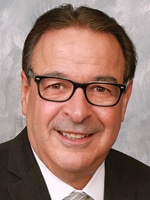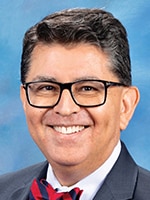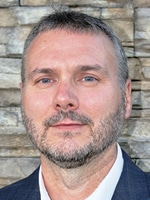April 2023—How is the demand for biomarker tests linked to new oncology drugs playing out in your health system? It is one of several questions laboratory leaders answered in a March 7 Compass Group call led by Stan Schofield, VP and managing principal of the Compass Group and formerly of NorDx/MaineHealth. That and digital pathology and the cost of storage, staffing and wages, the release of results, and the financial implications of the end of the public health emergency were the topics of the day.
The Compass Group is an organization of not-for-profit IDN system laboratory leaders who collaborate to identify and share best practices and strategies.
The 21st Century Cures Act required that laboratory results be made available to patients without delay. Most laboratories were already releasing results to electronic health records and those became available in patient portals, but patients having access before clinicians could talk with patients raised concern. How is it working? What problems, if any, have come up?
Steven Carroll, MD, PhD, chair, Department of Pathology and Laboratory Medicine, Medical University of South Carolina: It is going reasonably smooth for us. There was angst early on, particularly among our clinicians. We occasionally have problems with a patient receiving bad news before the physician has had a chance to talk with them. It has not happened often, so it’s been a relatively moderate concern thus far.

Terese
Sam Terese, how has it been working for Alverno?
Sam Terese, president and CEO, Alverno Laboratories, Indiana and Illinois: We haven’t had many challenges since we started to release the records. Ours is a little complex in that both our health systems release through their portal, and we had to create our own portal for the reference lab for patients who aren’t part of our health systems’ EHRs. We have a partnership with LuminateHealth to do that; it’s been rather seamless.
Mike Eller, what has been the experience at Northwell?
Mike Eller, assistant vice president of business development, Northwell Health Laboratories: We saw the same issue with portals and some physicians becoming upset that patients can see the results before them. We just integrated the lab patient portal into our LabFly app, so patients will be able to view not only results from a LabFly visit but also any results within Northwell Health. If they went to a patient service center or were in a hospital, they can find everything in one place.

Dr. Martinez-Torres
How is the demand for biomarker tests that are linked to new cancer drugs playing out in your system?
Guillermo Martinez-Torres, MD, president and chief physician executive, NorDx, MaineHealth: Biomarker testing usually triggers a specific therapy since the biomarker result will tell you about the biology of the tumor, which usually falls into specific treatment protocols. Those protocols are easy to put into practice and operationalize with standing orders from the oncology team.
The companion diagnostic space is a little like the Wild West at the moment, because usually for those therapies, you either have a small number or a single laboratory providing the specific companion diagnostic test, and it’s often a proprietary environment where they want you to send everything to them. Sometimes those laboratories are not in the United States, which is even more challenging.
Lauren Anthony, can you comment on this?
Lauren Anthony, MD, system laboratory medical director, Allina Health, Minneapolis: ASCP is talking about the role of a cancer biomarker testing navigator for newly diagnosed tumors to improve communication, test ordering, tracking tissue samples sent to reference laboratories for biomarker testing, and results follow-up. It’s a feasibility pilot.
I echo the comments Guillermo made. It is a logistics management challenge having to route tests to different places. It also affects decisions about what tests to bring in-house, since it seems like oncologists are more often pushing for the several-hundred gene panels that can be used to identify these different mutations. It’s complex. We have a department that takes care of specimen management and they’re busier and busier because as a new drug comes out, old cases for patients still living with the disease have to be pulled to see if the patients are now eligible for the drug. They also have to manage the send-out of all those specimens from the past, as well as for newly diagnosed cases.
Lee Bridges, what has been your experience?
C. Lee Bridges, MD, regional medical director, Bon Secours Mercy Health, Richmond, Va.: We have worked with our oncologists to have a protocol for non-small cell lung cancer, colon cancer, et cetera. For the companion diagnostics, the biggest challenge is that it seems like there’s a new laboratory on the block every month, and an oncologist will request a new test because they’ve met with a sales rep or seen something in a meeting. And very little is known about the test. Some of these tests cost $5,000 or $6,000 and don’t have a long track record.
Autumn Farmer, how does your system handle it?
Autumn Farmer, MHA, chief laboratory officer, Bon Secours Mercy Health, Cincinnati: We’re getting our oncology network to work together to decide that for non-small cell lung cancer, for example, we will all use this test and then interface that test to Epic. We wanted to control those interfaces through the LIS, but we’ve realized that if we have the data in our Epic system, then at least we can report on it and look for patterns of utilization.
There’s evidence that too many patients are not getting the recommended biomarker testing that is needed to get the right targeted therapies, particularly in non-small cell lung cancer. How is your system staying on top of that?
Sam Terese (Alverno): We ended up building most of the menu internally. We had a certain baseline, and within a month we doubled the volumes, not only by capturing what was going out but also by getting testing done more appropriately. The challenge was to build a menu that was expansive enough, and we needed to provide resources for our pathologists to facilitate the communication process to the medical staff. It is a challenge to get that message out to the oncologists and other members of the medical staff in our connected health systems. We also had to navigate the reimbursement challenge with a preauthorization process. We are seeing more and more adoption of genomics as a standard of care, and I suspect that will continue as cost of testing continues to decline. I like the notion of building things into your IT platforms and EHRs.
Joseph Baker, VP of laboratory, Baylor Scott & White Health, Dallas: We’re in a similar boat. We’re trying to handle a lot of this through Epic and builds, as we progress through the Beaker implementation.

Baker
Is staffing in your laboratories getting any better? Is there a greater volume of applicants or perhaps more people returning to the workforce?
Joe Baker (Baylor Scott & White): We’re seeing a mix, depending on the region. In our larger metropolitan areas, like Austin and Dallas/Fort Worth, more candidates are coming into the pool, most of whom no longer want to do agency and travel. In our rural areas we still have a significant deficit. We’ve been able to cut down our openings by about 20 percent over the past six months. We are kicking off an expanded medical laboratory scientist school in August, where we will more than double our class size, so we’re hoping that will help. And we’re still trying to manage the burnout with our team.
Guillermo, what are you experiencing?
Dr. Martinez-Torres (NorDx): Our experience has been similar to what Joe described—a combination of more people applying for vacant positions and travelers who have reached “traveler fatigue” and live near our hospitals and want to return to regular shiftwork. Since the beginning of the year, we’ve gone from over 100 open positions to about 70. In the past month we hired in excess of 20 people into NorDx.
Sam, how is staffing at Alverno?
Sam Terese (Alverno): We’ve created a number of programs we call “N.O.W.” programs for science majors and opened a new MLS program in partnership with a local university and have seen improvement, though not in every geographic market. Our vacancy rates are down considerably. We are now struggling to find students to put into programs. Everyone is competing for STEM kids. Our program was one of the few in Indiana that was actually able to fill all available slots. It’s another worry—the pipeline of students is going to shut down.
 CAP TODAY Pathology/Laboratory Medicine/Laboratory Management
CAP TODAY Pathology/Laboratory Medicine/Laboratory Management
